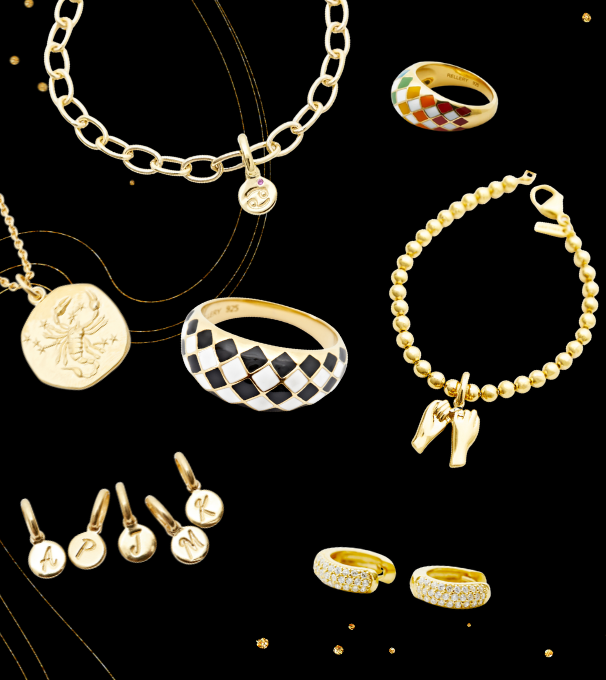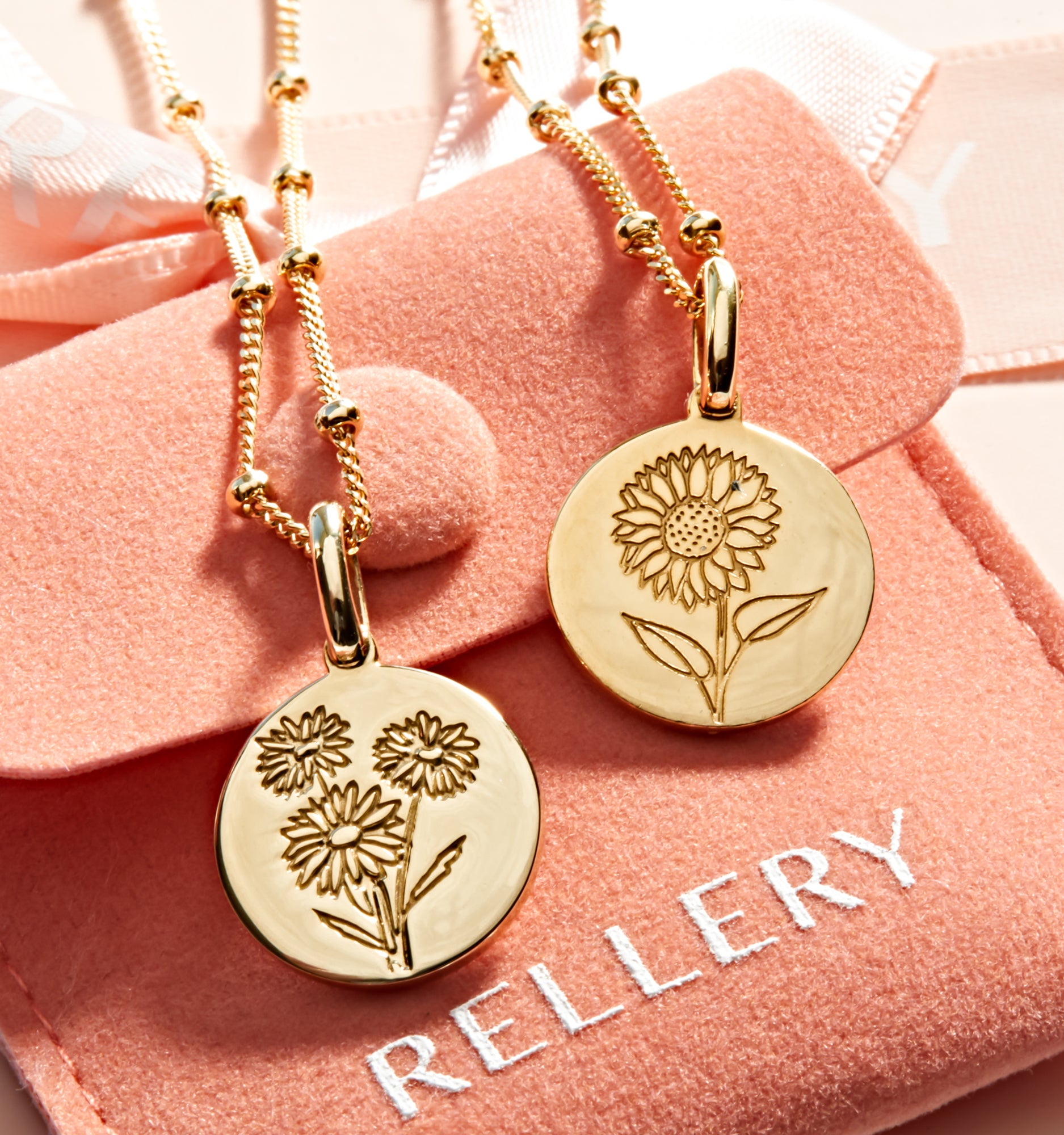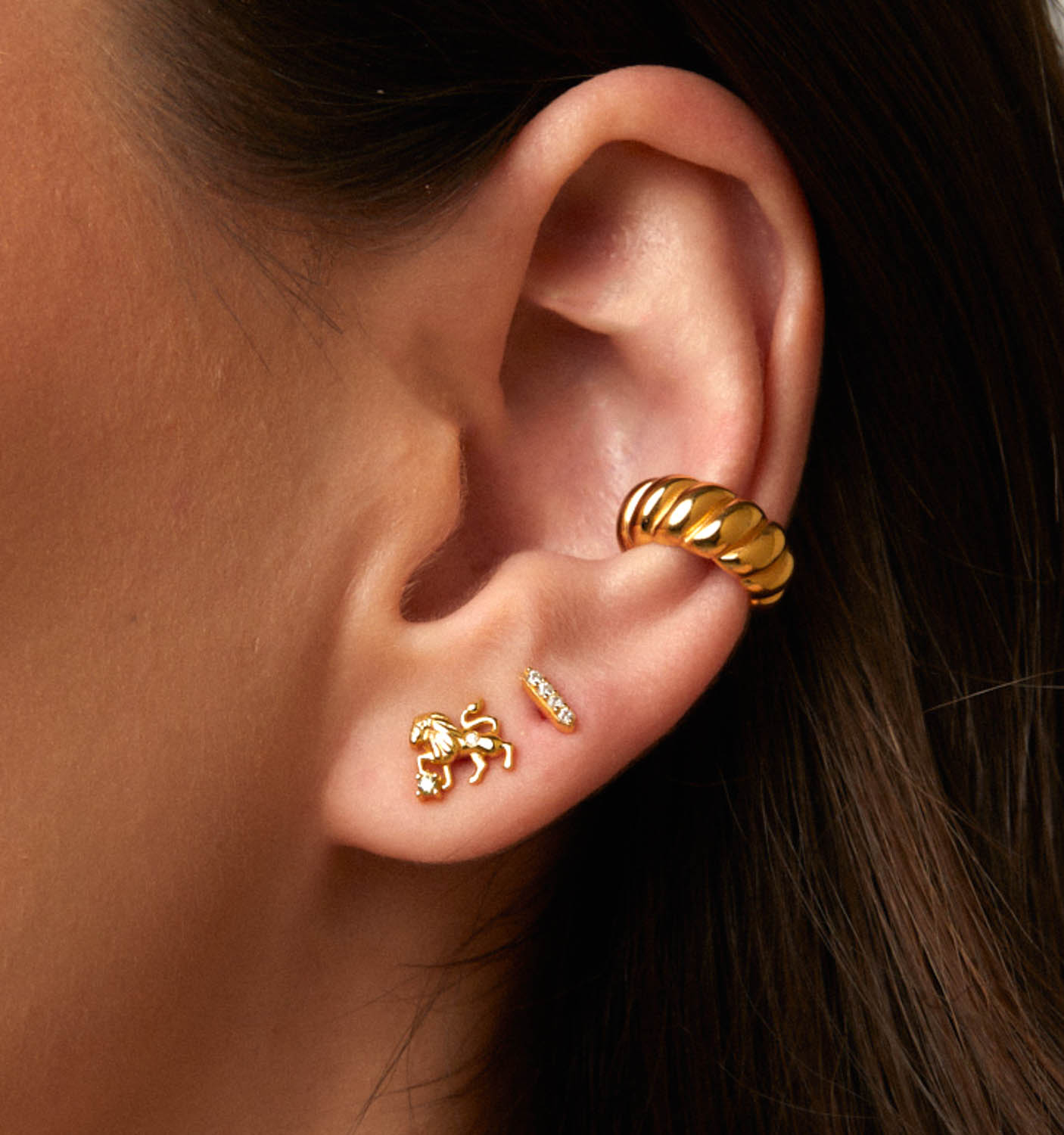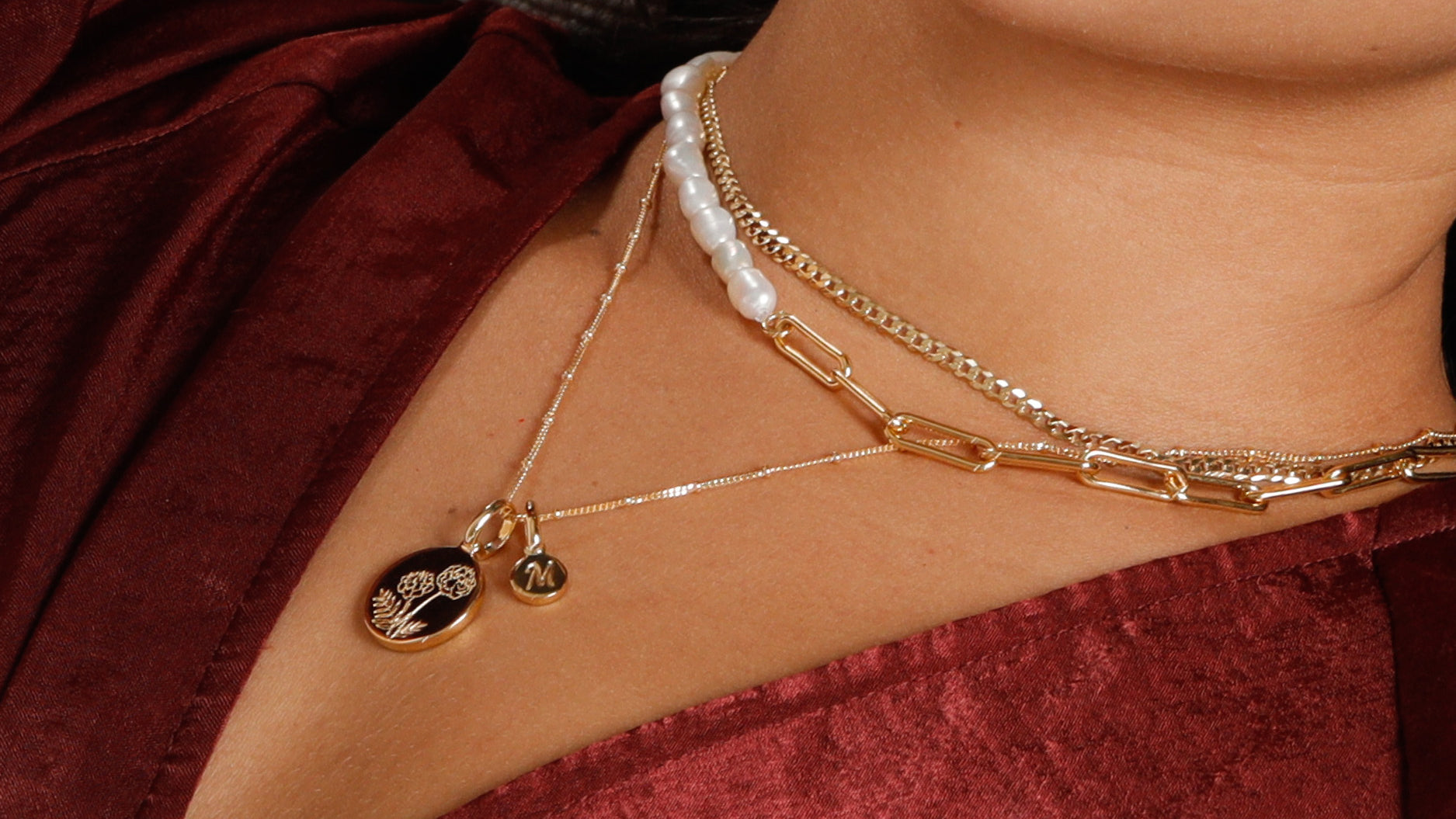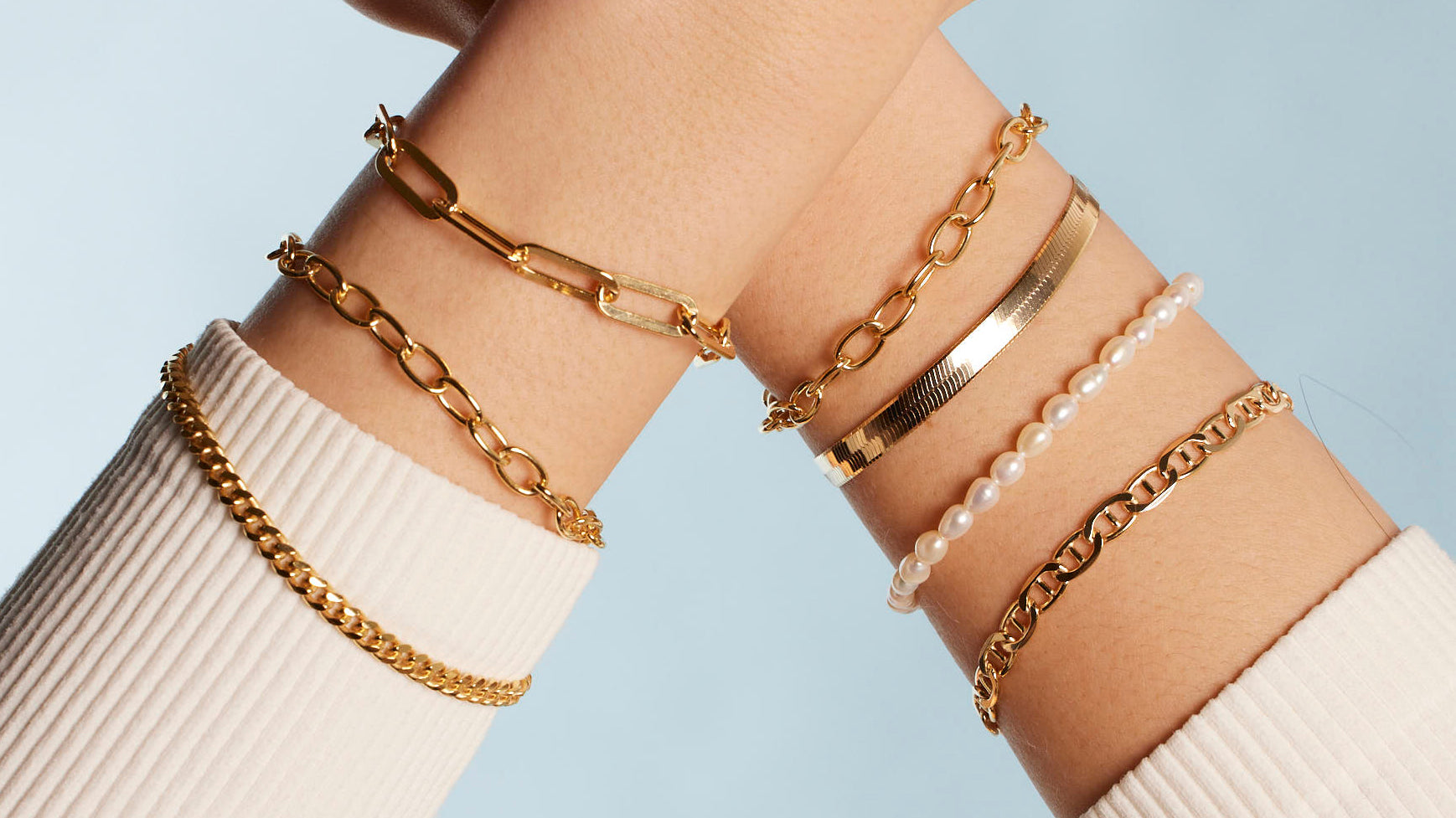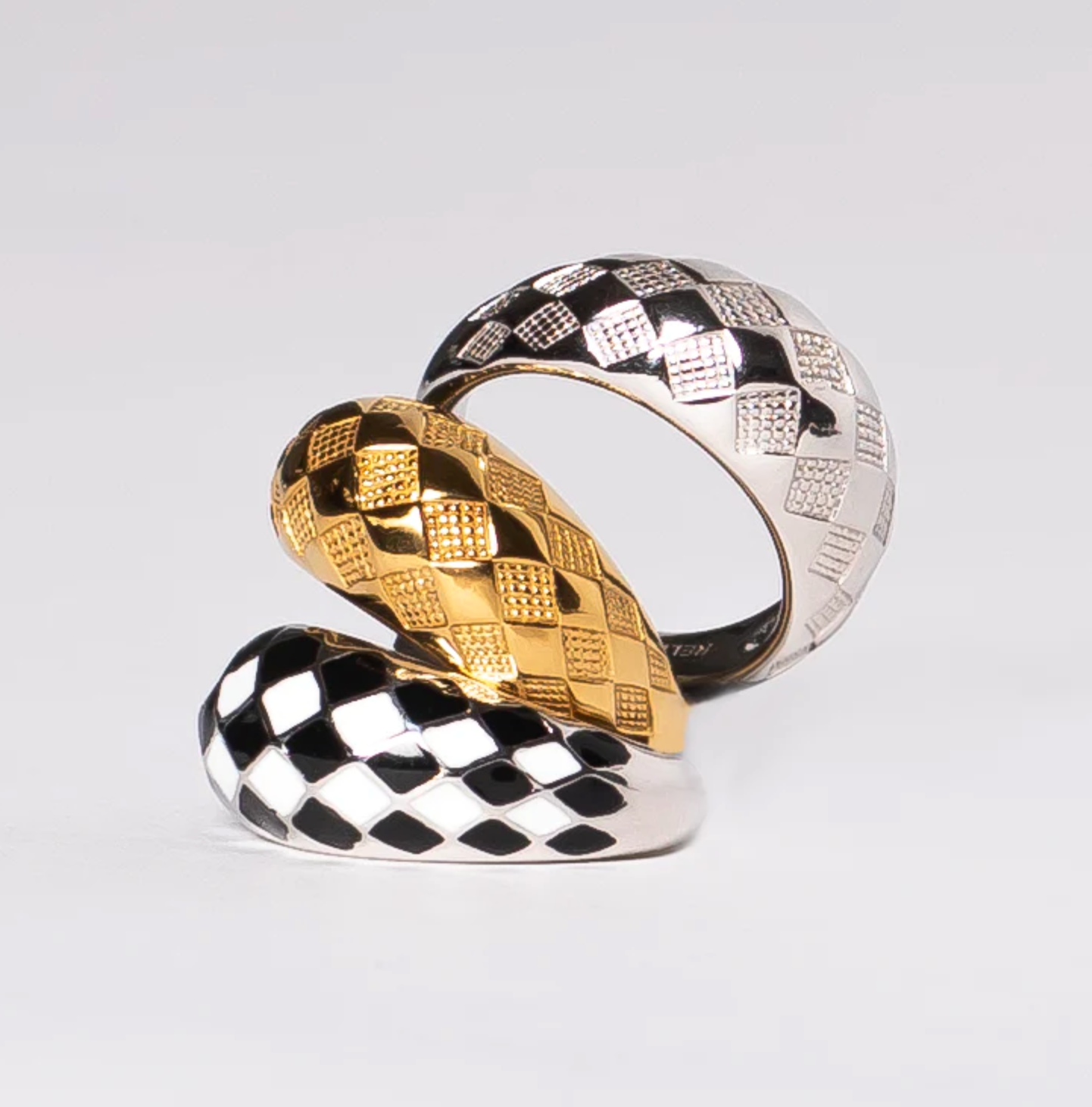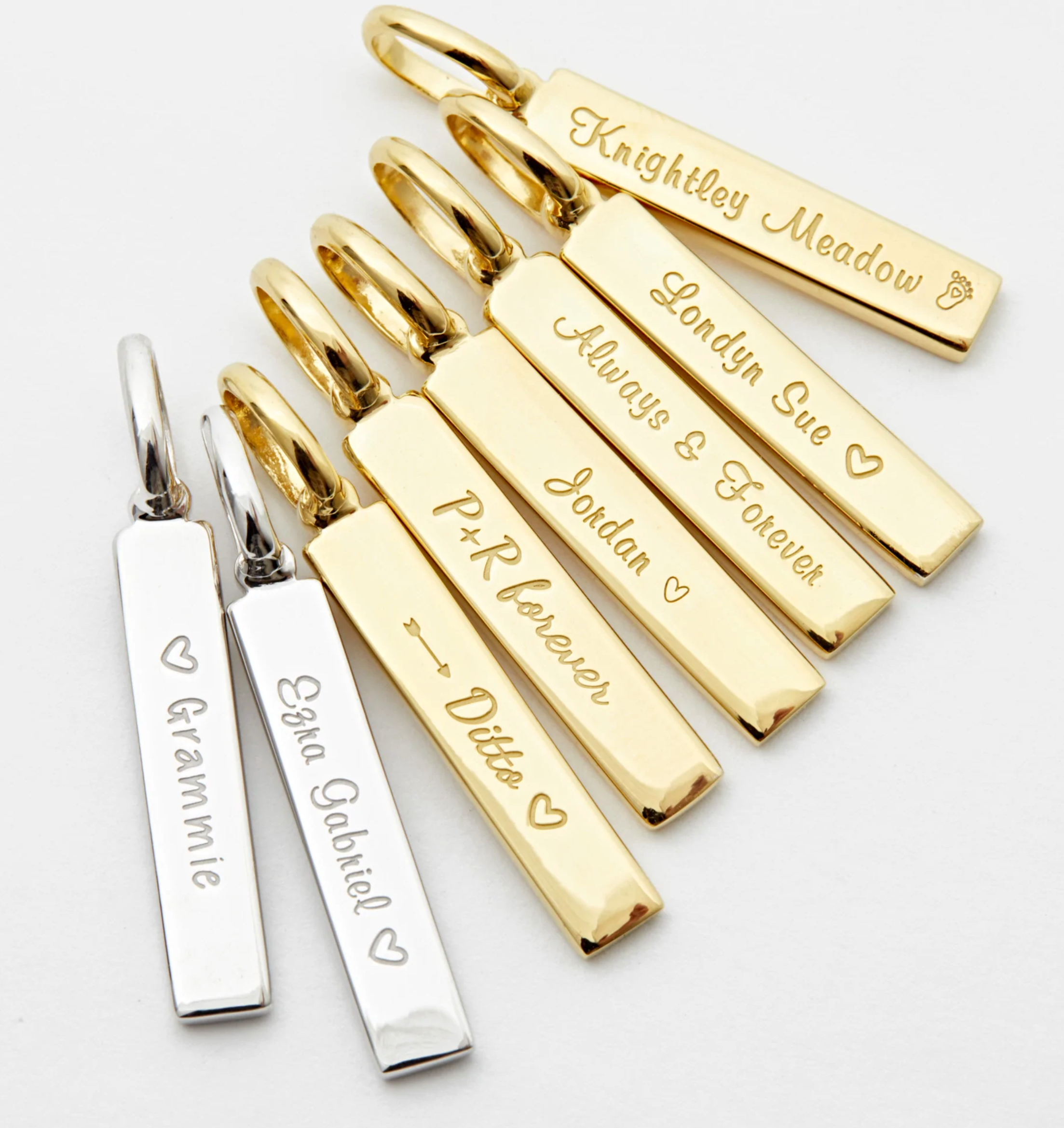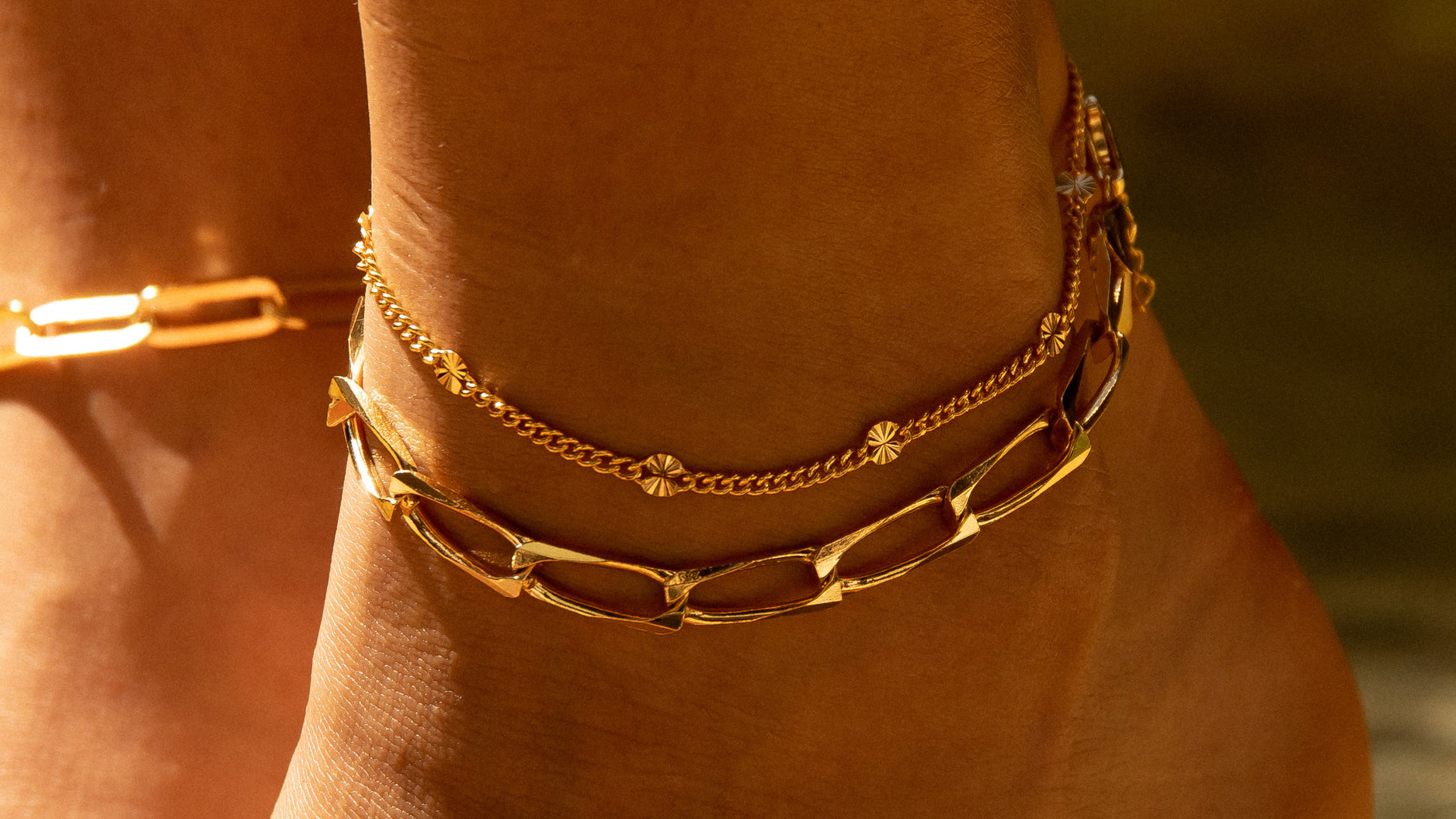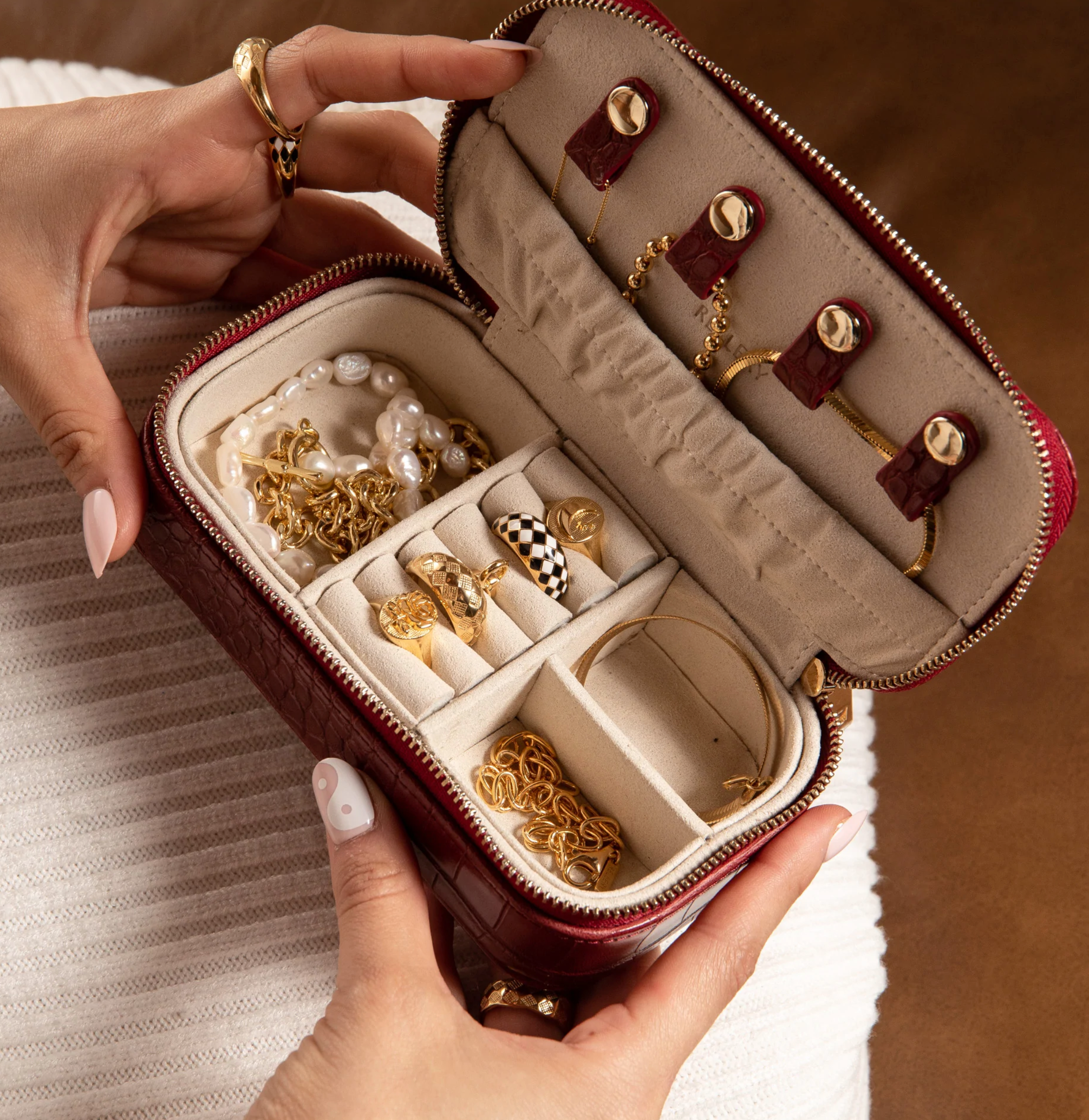Determining if your jewelry is solid gold or gold plated can be a bit of a challenge if you don’t know what to look for. There are a variety of ways to determine if your jewelry is legit solid gold or if it is gold plated.
The methods for figuring out the gold content range from a simple inspection to highly scientific, professional ways of determining the metals in your jewelry.
First, it’s important to understand a little bit about gold before you jump to conclusions about the value of your precious piece!
Types of Gold
All gold jewelry, solid gold or not, is made out of gold alloy and not pure gold. Pure gold is simply too delicate to create jewelry that will stand the test of time.
Yellow gold is made by mixing pure gold with zinc and copper. It has a beautiful yellow hue that most people associate with pure gold and looks best on those with olive skin tones. People with warmer undertones look beautiful in yellow gold,
White gold is perfect for those with fair skin tones or if you just want a more modern look. People with cooler undertones look great in white gold. It is made by mixing pure gold with a white metal such as palladium, manganese, or nickel.
Rose gold is a popular choice for jewelry and suits multiple skin tones. Rose gold is created by combining pure gold with copper to create that vintage, rosy hue.
Gold is measured in karats. So even though all gold is mixed with different metals to improve its strength, the purity of the gold is measured in karats. For example, 14 and 18 karats are often advised for engagement rings and wedding bands. They are more likely to hold up to daily use and resist dents, scratches, and other damage.
The higher the karat, the more delicate the jewelry. 24 karat gold jewelry might be beautiful, but it should be worn with greater care than a 14 karat gold piece.
If your piece of jewelry is gold plated, it will still have a karat rating for the plating alone, which can give you an idea of how delicate the plating is and what kind of care the jewelry will need over time.
Here are some of our favorite gold plated pieces that won't easily tarnished and won't turn your skin green.
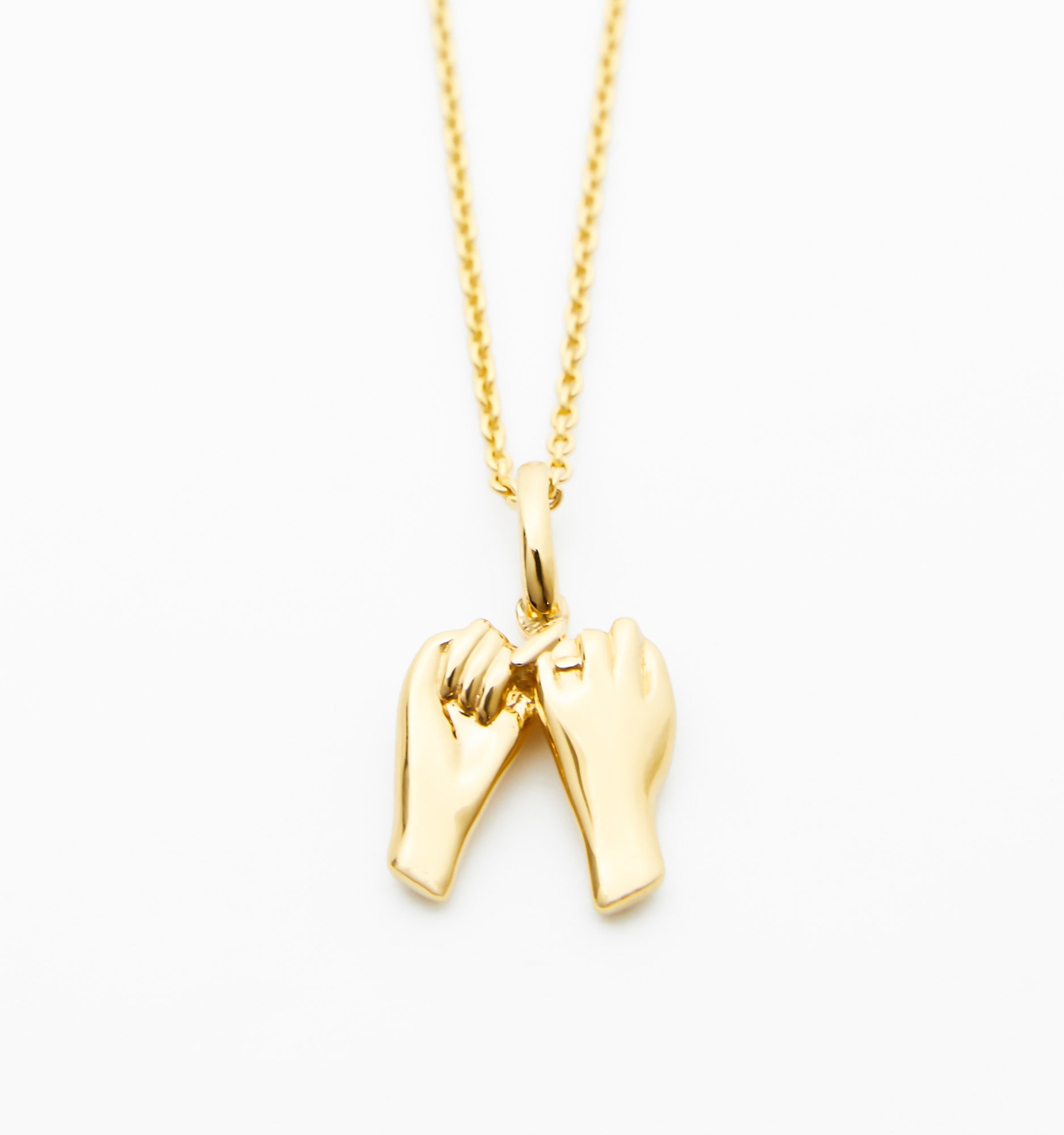
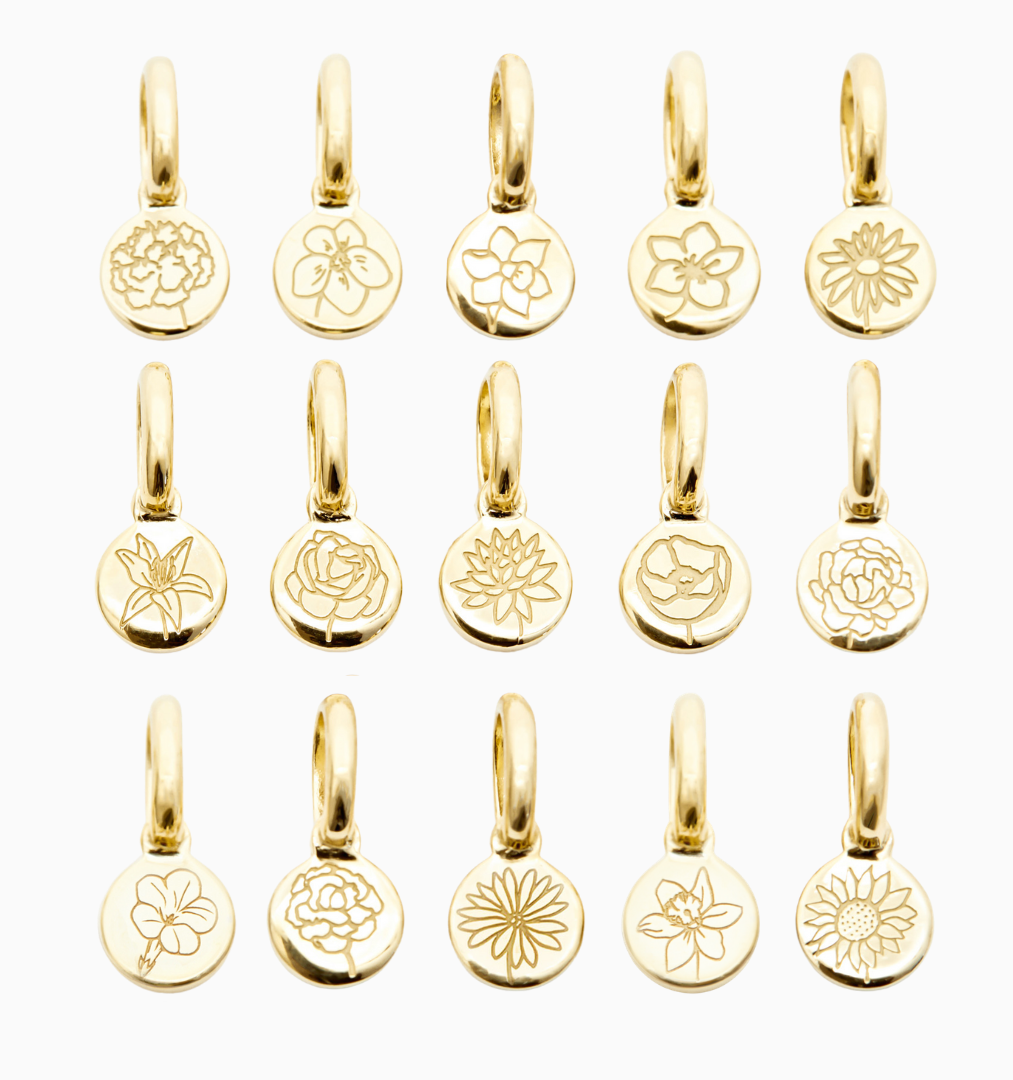
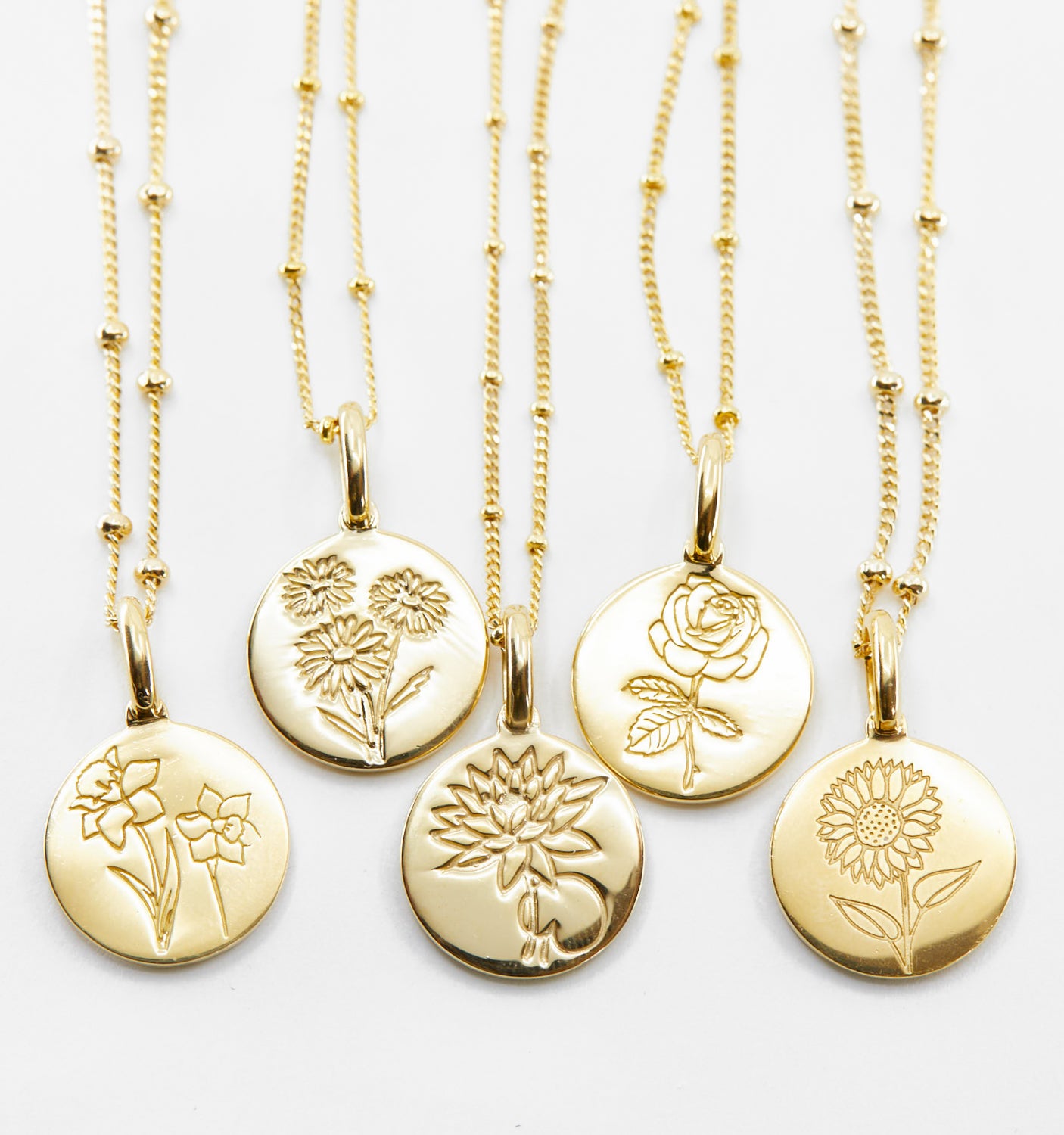
Non-Destructive Tests
Tests to determine if your jewelry is solid gold or gold plated can be divided into two categories: destructive and non-destructive tests.
These are fairly self-explanatory in nature: destructive tests involve damaging your jewelry by cutting it or taking a sample, and non-destructive tests just involve simple observations.
We’ll start with the easiest tests you can do at home, which don’t involve damaging your precious gold jewelry!
Inspect Your Jewelry for Stamps
The simplest way to determine if your jewelry is made of solid gold is to check the engraving or stamp. For rings, look on the inside of the ring for a very small print. Bracelets and necklaces should have their initial stamps on the clasp or located somewhere on the piece that would not typically be visible while you are wearing it.
Depending on where your jewelry was made, it’s likely that there is a small engraving or stamp somewhere on the piece. In the United States, The National Gold And Silver Stamping Act was ratified in 1905 as a way to prevent fraud.
This law requires jewelers to stamp their jewelry with a quality marking that denotes the karats of the piece. If you have an heirloom piece that was made before 1905, you might not have this marking, so this isn’t always a fail-safe, but it is usually the best way to determine the gold content of your jewelry.
Here are a few stamps or markings that you may see on your jewelry:
Magnetism Testing
While this method isn’t 100% fool-proof due to the type of gold you might be dealing with, on the whole, solid gold rings are not magnetic.
If you have a strong magnet lying around, see if your jewelry is attracted to it. But be warned! If your jewelry is white gold, it might be attracted to the magnet depending on its nickel content.
Gold and silver are not magnetic. So technically, a piece that is heavy gold electroplated might not register with the magnet. That is why it’s important to use this test in conjunction with other tests if you absolutely must be sure about whether or not your jewelry is solid gold.
Be Your Own Archimedes
If you have a piece of jewelry that you suspect is solid gold and it does not have any jewels, diamonds, or other embellishments that you know are not gold, you can use a simple experiment of water displacement to determine the gold content of your piece. Science!
This method might take a little more prep work, but it is a cool experiment. Since gold has a known density of 19.3 grams per cubic centimeter, you can easily determine if your jewelry is gold plated or solid gold by weighing it and then dropping it in some water. You’ll need a scale that measures in grams, some water, and a graduated cylinder.
First, weigh your jewelry in grams and record the weight. Drop your jewelry into a graduated cylinder with enough water to cover the jewelry (best to make it an even number), which shows the water volume in millimeters. Then record the difference between the volume of water from before you dropped the jewelry into the volume of water with the jewelry in the cylinder.
Now, divide the mass of the jewelry in grams by the volume in cubic centimeters, and voila! The closer the number is to 19.3 grams per cubic centimeter, the greater content of gold is in your jewelry.
Destructive Tests
These types of tests will damage your jewelry and should always be done by a professional. Typically you wouldn’t do these tests unless it was a last resort.
For instance, if you are looking to sell your jewelry or get it appraised for insurance, a jeweler might conduct these tests if none of the non-destructive tests are conclusive.
Acid Test
This test is exactly what it sounds like. A jeweler will remove a piece of the metal and drop it into some acid for observation.
The changes in color that occur when the metal dissolves will determine the metal content of the jewelry.
This test is not recommended due to the damage to your jewelry and is mostly used by resellers, dealers, and jewelers who may want to melt down your jewelry to create something different.
Scratch Test
This test involves the jeweler making a deep cut into your gold item. They will then inspect the cut under a microscope or magnifier.
If the metal doesn’t change throughout the cut, the jewelry is more than likely solid gold. Gold plated jewelry will typically have a line of demarcation in the scratched area where the gold plating ends, and the base metal begins.
Again, this test is for professionals only and is not recommended as a home test as you could permanently damage your jewelry.
Value Is In the Eye of the Beholder
Whether or not you have inherited your gold jewelry or purchased it for yourself, ultimately, the value of the piece lies in how much you cherish it and what it means to you. Sometimes even the most common items that others might consider “cheap” could mean the most to us.
Whether or not your jewelry is solid gold or gold plated, the care of your jewelry remains the same. Be sure to clean it regularly with a soft, microfiber cloth and warm water. Store your jewelry in a jewelry box to keep it safe from damage or loss.
Your jewelry is sentimental and important to you regardless of its gold content or how it was made, and at the end of the day, that is the most important thing to remember!
Sources:
https://www.moneymetals.com/precious-metals-buying-guides/how-to-test-gold-and-silver-at-home
https://sciencing.com/tell-pure-using-water-displacement-8109592.html
https://sciencing.com/ways-determine-density-2508.html
https://mjsa.org/publicationsmedia/compliance_guides/stamping_and_marking
https://fractory.com/magnetic-metals-non-magnetic-metals-with-examples/



